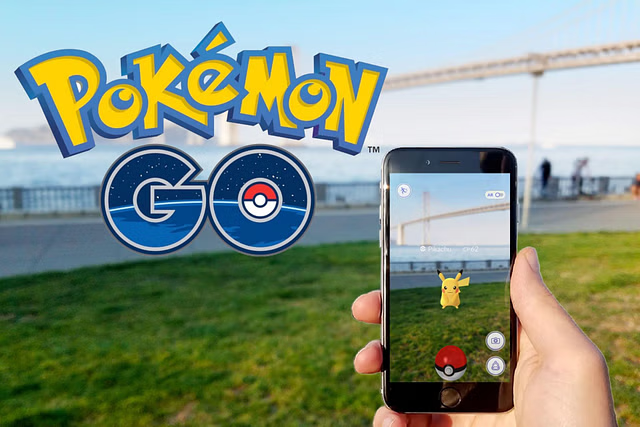According to recent industry predictions the worldwide Augmented Reality (AR) market will reach more than $88 billion during 2026. Today’s augmented reality technology extends beyond being a future technological gimmick since it revolutionizes retail operations and education and environmental exploration. Virtual clothing try-ons and interactive real-life games combine with various advanced AR experiences that enhance user diversity. Each of the three main types of AR mechanisms includes marker-based systems as well as markerless approaches and location-based configurations.
These distinct types of augmented reality technology deliver specialized advantages for changing various sectors which include educational establishments and stores and gaming studios and travel destinations. Business success through AR demands complete comprehension of basic distinctions between AR types because it determines the proper selection for products or marketing campaigns.
Statista reports a constant growth of consumer and commercial AR interest which makes this the ideal time to explore type distinctions and their digital interaction transformations.
Marker-Based AR: Bringing Images to Life

The visual marker-based AR system known as image recognition AR works by using QR codes and printed images along with particular shapes to activate digital content. The device camera identifies markers which enables it to place digital elements against the physical marker consistently.
Use Cases and Benefits
Education represents the most widespread application of augmented reality technology between all uses. An augmented reality enrichment inside textbooks allows scanning which triggers dynamic 3D model animations such as anatomy models, historical landmarks or scientific principles.
The retail industry utilizes marker-based AR systems to deliver virtual demonstrations of their products. The customer can interact with an animated online version of a device through 3D visuals by scanning designated logos or labels.
The exact precision of marker-based AR proves to be its primary beneficial aspect. This system exhibits exceptional stability because it depends on targeted visual information which minimizes alignment issues making it suitable for professional presentations.
However, it does have limitations. The system works only if conditions include bright illumination and exceptional camera resolution and must use physical markers that fail to be practical in some situations.
Markerless AR: Freedom to Interact Anywhere
Markerless AR systems also known as SLAM AR do not need predefined images or objects for their operation. Your phone scans the environment through sensors and the camera to detect surfaces where digital objects can be placed for unrestricted user interaction with AR components.
Real-World Examples
Users can understand the IKEA Place app as the perfect illustration of markerless AR. The IKEA Place app helps customers view furniture in their home space while enabling them to spin it around and inspect how their room looks with different items installed.
The gaming app Pokémon Go demonstrates the potential of markerless AR when it adds virtual content to realistic environments which reacts to changes in lighting and user movement between different spaces.

Users benefit from the markerless implementation of augmented reality because it presents step-by-step workout guidance alongside 3D avatar demonstration during their fitness routines at home.
Strengths and Challenges
The capability of markerless augmented reality makes it very adaptable along with its highly immersive qualities. Users gain the ability to engage with AR experiences in a creative and interactive way through mobile applications that function while moving from place to place.
The technology needs devices with state-of-the-art sensors as well as high processing power which might impact the runtime of batteries and performance on outdated smartphone models.
Location-Based AR: Contextual and Engaging
The main concept of location-based AR involves attaching digital elements to physical locations with support from GPS together with digital compasses and sometimes beacons or Wi-Fi signals. Location-based AR finds its best application in outdoor environments together with large public spaces.
Applications Across Industries:
Historical landmarks enable visitors to observe virtual depictions of ancient architecture and military warfare that appear across the authentic environment.
Retail and Promotions sectors use digital “treasure hunts” within cities to guide customers toward physical stores by offering interactive AR-based games.
The use of location-based AR enables concert and festival organizers to develop treasure hunts and improve stage displays while delivering virtual meet-and-greet sessions to attendees.
This AR system works best when GPS signals remain strong but fails to function in locations with weak signals like urban or underground areas. Although somewhat limited by geo-locations the system functions as a pinnacle solution for people to physically explore their surroundings.
Quick Comparison Recap
Here’s a refreshed comparison to summarize the key differences:

Elevating AR with TwinReality
Businesses using AR for interactive marketing together with product visualization and training require essential selection of development partners. That’s where TwinReality steps in.
TwinReality functions as a leading enterprise focused on developing virtual reality and AR solutions which bring exciting AR experiences to all three application areas. Using its specialized solutions TwinReality assists various companies including museums exhibition designers along with real estate firms and tourism organizations to transform their creativity into exceptional immersive solutions for marker-based exhibitions and markerless virtual tours and location-based AR guides.
Conclusion
Augmented reality functions as a strong technological tool which shapes the way businesses interact digitally throughout different sectors and beyond. Businesses together with developers can design memorable experiences through the combination of marker-based, markerless and location-based AR approaches because they know each method’s specific advantages.
These three Augmented Reality types deliver different user interactions starting with marker-based AR precision and going on to markerless AR freedom and finishing with location-based AR charm. All businesses and educational facilities in retail and tourism and entertainment can benefit from choosing the appropriate type of AR technology because it enlarges their initiatives while making their messages tangible.
Congratulations to all businesses that implement AR solutions today because the time remains ideal for experimental learnings through innovative practices. The next step for implementing AR features in your work begins with exploration of platforms and tools or consulting with specialists such as TwinReality to realize your ideas through interactive AR.


